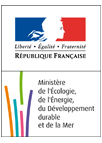SynsCOP-15
Integrated system of monitoring and assessment of climate negotiations during COP-15 and COP-16
The research proposed in the present GICC Project (GICC stands for « managing climate change impacts »; this is a research program of the French Ministry of environment). It exploits three complementary models (TIAM, GEMINI-E3 and GENIE) to establish an integrated system of monitoring and assessment of the climate negotiations that begin with COP-15 (December 2009).The three models used in a harmonized manner are:
- TIAM: A World "BottomUp" Technology-Economy model, including a climate module, simulating partial economic equilibrium (energy system) and able to account for some uncertain parameters;
- GEMINI-E3: A World "TopDown" macro economic model (Computable General Equilibrium model), simulating the macro-economy and able account for some uncertain parameters;
- GENIE: A Climate model of intermediate complexity, simulating the evolution of the global climate system with regional resolution. GENIE-1 (used in the Beta version of the website) has 2-D atmosphere and 3-D ocean, whereas GENIE-2 (final version of the website) is a fully 3-D coupled model.
Objectives:
- Firstly, to support the negotiations during COP15, we simulate a set of scenarios representing different arrangements proposed for the post-2012 period. These simulation results are used to address questions about the consequences of policies negotiated or discussed under COP15. The system promotes the use of models already developed and implemented through European programs (6th and 7th Framework Programs) and GICC.
- Secondly, the system will follow the implementation of measures agreed under the Kyoto Protocol (which lasts until 2012) and those that follow (agreed at COP15). We will evaluate the particular conditions (sectoral emissions reductions, cost, carbon market, etc..) that meet the Kyoto targets and the probability of reaching the targets in the post-2012 period that are decided at the COP15 negotiations.
The system of monitoring and evaluation will also consider parametric uncertainty in climate models and technical-economic adaptation.
The proposed system can respond directly to questions raised regarding:
- Climate Policy and International Negotiations, representing scenarios for reducing greenhouse gas emissions at the global and regional level (TIAM and GEMINI-E3 models are global models but multi-regional), including information on energy and technology decisions, costs incurred, and the distribution of reduction efforts between different countries;
- Adapting the technico-economical system to reduce emissions of GHG, describing energy changes and technological resources available at a sectoral level;
- Impacts (changes in temperature, precipitation, biomass), forcing local adaptations for society, taking into account the climatic uncertainties represented in GENIE.
The project is divided in two phases, corresponding to COP-15 and COP-16 conferences.
The mid-term report can be downloaded here (in french).




